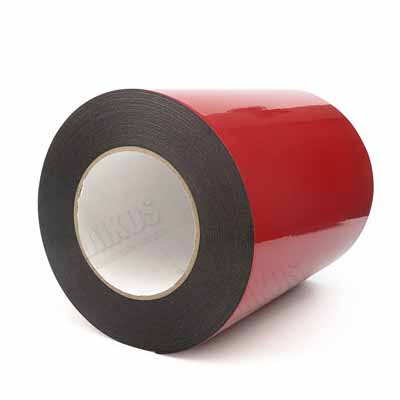Foam tape is a product that is used to serve many different purposes in various industries. Polyethylene foam tape is typically used for insulating, soundproofing, marketing, padding, cushioning, and sealing. Each foam tape has various uses and different attributes. Some of these tapes are also available in various sizes, adhesives, carriers, and thicknesses.
Foam tape is often used in high-strength industrial applications because of its high strength and stiffness. It is often used as a mechanical fastener in many applications such as fastening sheet metal, sheet plastic, foam boards, pipe fittings, connecting rods, nuts, and bolts, and connecting sheets. The ability to tolerate high stress is one of its most desirable characteristics. This is especially true in the aerospace and construction industry where high strength and the ability to take punishment in many hazardous environments are primary goals. Because of its unique properties and benefits, foam tape is frequently used as an adhesive for reinforcing and strengthening materials.
Foam tape is also used to provide an improved bond to various types of plastics, metals, and even ceramics when bonded using different thermal expansion bonding agents. It is most often used in the automotive industry to bonded sheet metal and steel components in the manufacture of bumpers, fenders, shock towers, deck boxes, engine parts, and more. Many times it is used as a mechanical fastener, specifically with epoxy resins and high-strength glue to attach and lock sheets, panels, and tubing to sheet materials such as fiberglass, aluminum, copper, laminate, or wood products. In addition, it is often used as an adhesive to permanently bind sheet materials together when heat, pressure, or friction cause a sheet to be torn and fail to bond properly.
Some foams are open-cell, meaning that they can expand and contract when heated or cold, but some have closed-cell foam that changes consistency when heated or cold. This type is often preferred because it provides a tighter bond than open-cell foams and will not be destroyed by chemical reactions during processing or shipping. Many times these Closed Cell Foam tapes can be easily cut to fit most standard sizes and applications while providing a higher level of adhesive attachment because they are thicker. The thicker stock will also resist chemical reactions to the adhesive causing it to become less likely to damage its intended application. Foam tapes generally come in two different forms including open cell and closed cell. Open-cell foam tape is made with a thicker open cell core which increases both its strength and stiffness while providing a tighter bond.
Foam tape gaskets are typically found in shipping applications as well as adhesive sealants and packaging. The most common application of foam tape gaskets is in the construction and repair industry where they are used to prevent leakage in the pipework, plumbing leaks, and other forms of construction-related issues. The sealing surface of the tape is typically made from a solid rubber compound so that it is less likely to be destroyed by water or other chemicals in the environment. The tape gasket should also be highly conductive to allow for the flow of electric current. The die-cut version of foam tape is used more in the industrial world in place of gaskets due to its increased strength and durability.
Foam tape gaskets are also commonly found in insulation, where they help to seal off joints to prevent moisture and termite from expanding into cracks in thermal insulation. The tape's high level of flexibility also helps to reduce expansion and contraction which can increase the risk of stress cracking in thermal insulation. When thermal insulation is used in residential homes, the foam tape is often placed on the top sheet of insulation before it is installed to help ensure that it adheres properly. Once installed, the adhesive will adhere to the top sheet of thermal insulation. This method ensures that the adhesive is never released causing a chance of its removal, which increases the risk of thermal bridging.




